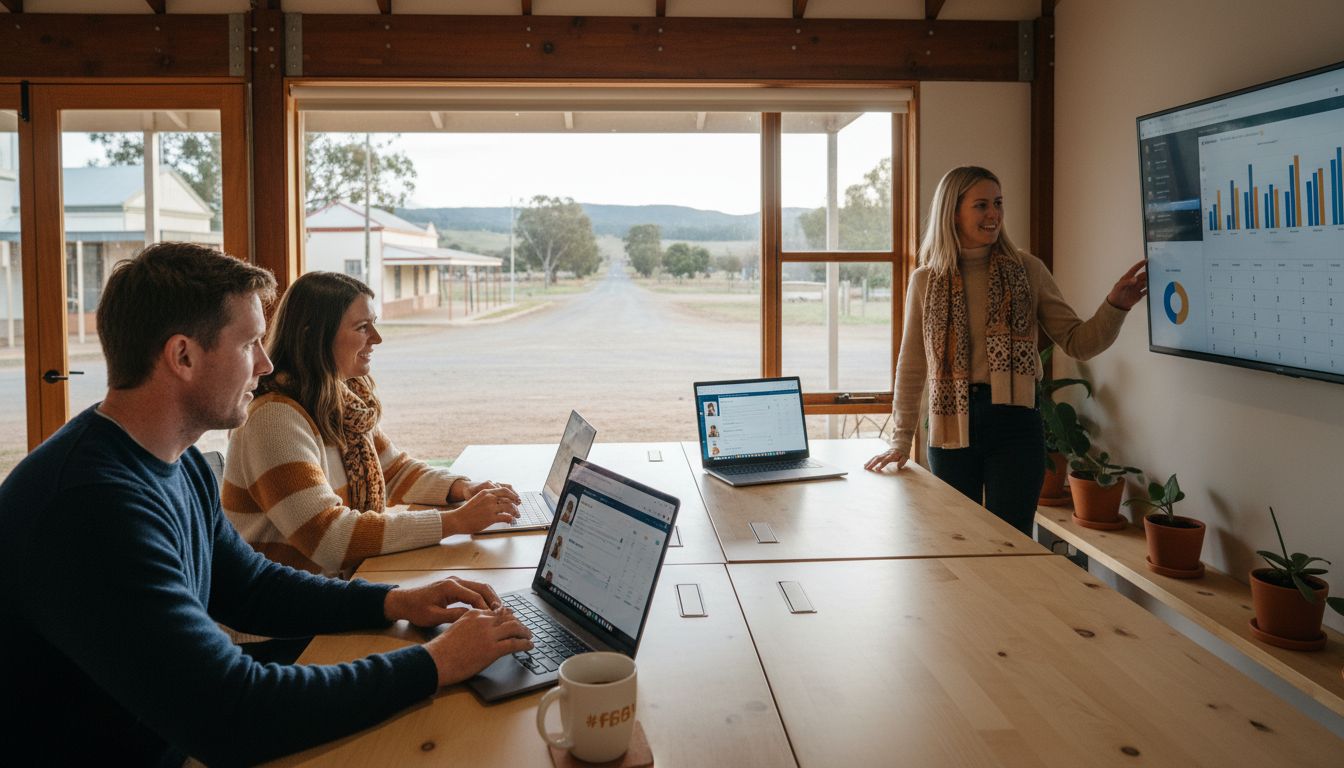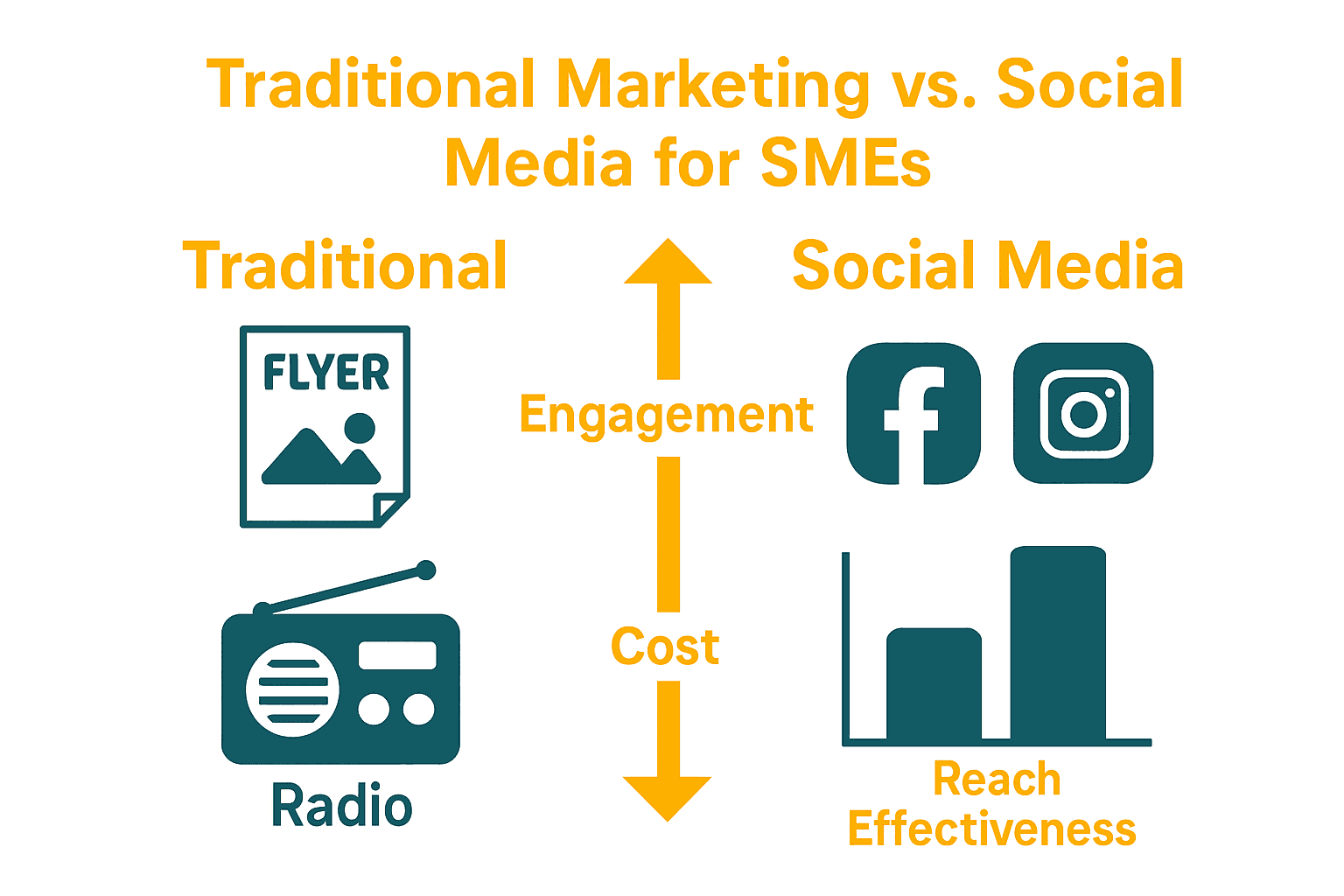Why Social Media Matters: Complete Guide for SMEs
- Eddie The Chef

- Nov 9
- 7 min read

More than four billion people worldwide use social media, making it one of the most influential forces in business today. For small and regional Australian enterprises, these platforms are not just about sharing updates with friends. They open doors to new customers, direct conversations, and valuable insights that were once out of reach. By understanding how social media works and what it brings to the table, businesses can shape lasting connections and drive meaningful growth.
Table of Contents
Key Takeaways
Point | Details |
Business Value of Social Media | Social media serves as a strategic tool for SMEs, enabling direct engagement, cost-effective marketing, and real-time feedback. |
Types of Platforms | Diverse social media platforms cater to various business objectives, with each offering unique features for effective audience connection. |
Customer Engagement | Social media transforms customer interactions into two-way conversations, allowing businesses to respond quickly and create community through engaging content. |
Risks and Best Practices | SMEs must navigate risks related to privacy and digital reputation, implementing comprehensive guidelines and security measures to protect their brand. |
Defining Social Media and Its Business Value
Social media represents a dynamic digital ecosystem where people and businesses connect, share, and interact through internet-based platforms. Social media platforms are more than just communication channels - they are powerful strategic tools that enable businesses to engage directly with their target audience. According to NIU, these websites and applications facilitate real-time content sharing and connections among users, transforming how companies communicate and market themselves.
For small and medium enterprises (SMEs), social media offers unprecedented opportunities to level the playing field with larger competitors. Global Youth Wharton highlights that these platforms allow businesses to create and share content, fostering virtual interactions that can significantly enhance brand visibility and customer relationships. The key business advantages include:
Direct customer engagement
Cost-effective marketing
Real-time market research
Targeted advertising capabilities
Enhanced brand awareness
Understanding social media’s business value means recognizing it as a strategic communication tool, not just a digital billboard. Unlike traditional marketing channels, social media enables two-way conversations, allowing businesses to listen, respond, and adapt to customer needs in real time. For regional Australian SMEs looking to expand their digital footprint, understanding why social media management matters can be a game-changing strategic decision.
The landscape of social media is continuously evolving, with platforms offering increasingly sophisticated tools for businesses to connect, analyze, and grow their audience. By embracing these digital channels strategically, SMEs can transform their marketing approach from broadcast communication to meaningful, data-driven engagement.
Types of Social Media Platforms Explained
Social media is a vast digital landscape with diverse platforms catering to different communication needs and business objectives. UNE identifies multiple types of social media platforms, each serving unique purposes in content creation and sharing. These platforms range from blogs and wikis to sophisticated media sharing and networking tools that enable businesses to connect with their audiences in increasingly innovative ways.
According to Be Connected, the most common social media platforms include:
Facebook: Social networking and community building
YouTube: Video content sharing and marketing
Instagram: Visual storytelling and photo sharing
Twitter: Microblogging and real-time communication
LinkedIn: Professional networking and B2B connections
Each platform offers unique features that can significantly benefit small and medium enterprises. For instance, visual platforms like Instagram work exceptionally well for product showcasing, while LinkedIn provides opportunities for professional networking and thought leadership. Understanding the role of social media in business can help regional Australian businesses strategically select platforms that align with their marketing objectives.
Beyond these mainstream platforms, emerging social media tools continue to reshape digital communication. Businesses must stay adaptable, understanding that social media is not a one-size-fits-all solution but a dynamic ecosystem requiring tailored strategies. By carefully selecting and leveraging the right platforms, SMEs can create meaningful digital connections that drive engagement, brand awareness, and ultimately, business growth.
Key Benefits for Regional Australian Businesses
Elucidate highlights that social networking provides critical opportunities for regional businesses to expand their market reach and enhance competitiveness. For small and medium enterprises in areas like Gippsland, Ballarat, or rural Victoria, social media represents a powerful equalizer, allowing businesses to connect with customers beyond traditional geographical limitations.
According to Be Connected, regional Australian businesses can leverage social media for multiple strategic advantages:
Cost-effective marketing compared to traditional advertising
Direct customer engagement and feedback
Increased brand visibility
Targeted local and national audience reach
Building community trust and credibility
Showcasing unique regional business offerings
For regional businesses looking to develop a comprehensive digital strategy, understanding how to navigate these platforms is crucial. Marketing Australia: Complete Guide for Regional Businesses can provide additional insights into creating a robust online presence that resonates with local and broader markets.
Moreover, social media allows regional businesses to tell their unique stories, highlight local expertise, and create genuine connections that transcend physical boundaries. By strategically using these platforms, SMEs can transform their digital footprint, turning local strengths into competitive advantages that attract customers, build relationships, and drive sustainable business growth.

How Social Media Drives Customer Engagement
NIU reveals that social media has transformed customer engagement from a one-way communication model to a dynamic, interactive experience. By enabling real-time interactions, businesses can now respond immediately to customer inquiries, gather instant feedback, and create a sense of community that goes far beyond traditional marketing approaches.
According to UNE, businesses can drive customer engagement through strategic content sharing and user participation techniques:
Initiating meaningful conversations
Encouraging user-generated content
Responding quickly to customer comments
Creating interactive polls and surveys
Sharing behind-the-scenes business insights
Highlighting customer testimonials and stories
For regional Australian businesses seeking to enhance their digital engagement, 7 Effective Examples of Social Media Content for SMEs provides practical strategies for creating compelling online interactions. The key is to move beyond broadcasting messages and instead foster genuine connections that make customers feel heard, valued, and part of your business’s narrative.
Engagement isn’t just about posting content - it’s about creating experiences that resonate with your audience. By humanizing your brand, sharing authentic stories, and actively listening to customer feedback, social media becomes a powerful tool for building trust, loyalty, and long-term relationships that can transform casual followers into passionate brand advocates.

Risks, Challenges, and Best Practices
CCAC highlights that while social media offers tremendous opportunities, it also presents significant risks, particularly around confidentiality and privacy. For small and medium enterprises, understanding and mitigating these risks is crucial to maintaining professional credibility and protecting sensitive business and customer information.
According to San Jose State University, businesses must navigate several critical challenges when using social media:
Credibility of online information
Managing digital reputation
Protecting sensitive business data
Maintaining professional online conduct
Preventing potential security breaches
Ensuring consistent brand messaging
Regional Australian businesses can proactively address these challenges by developing comprehensive social media guidelines. Understanding Why Use Social Media Marketing for Business provides insights into creating strategic approaches that minimize risks while maximizing digital engagement.
Best practices involve implementing robust security protocols, training staff on responsible social media use, and developing clear communication strategies. By treating social media as a professional tool rather than a casual platform, SMEs can leverage digital connections while protecting their brand’s reputation and maintaining the trust of their customers.
Unlock the Power of Social Media for Your Regional Business
The article highlights the crucial challenge regional SMEs face in leveraging social media effectively to build meaningful customer engagement, manage risks, and extend their market reach beyond local boundaries. If you are striving to transform your social media presence from sporadic posts into a strategic, two-way conversation with your audience, you are not alone. Successful social media management requires a tailored approach that combines authentic storytelling, real-time responsiveness, and careful risk management — all areas where many small businesses feel uncertain or overwhelmed.
At Marketing Recipes Australia, we understand these pain points deeply. With over 30 years of experience helping regional businesses grow, our unique ‘kitchen-inspired’ approach blends creative content like video marketing and doodle videos with robust social media strategies designed specifically for the challenges regional Australian businesses face. We provide a one-stop platform for business owners who want to move beyond basic posting to engage customers, build trust, and drive growth.
Ready to turn your social media efforts into genuine customer connections? Discover how our tailored solutions can help you navigate the dynamic social media landscape with confidence and creativity.

Explore our full range of services at Marketing Recipes Australia and learn more about why social media management matters. Start your journey to better engagement today by checking out effective social media content strategies for SMEs and take the next step towards digital success now.
Frequently Asked Questions
What are the key benefits of using social media for small and medium enterprises (SMEs)?
Social media provides several benefits for SMEs, including cost-effective marketing, direct customer engagement, increased brand visibility, targeted advertising, and real-time market research. These advantages help level the playing field between smaller businesses and larger competitors.
How can SMEs effectively engage with customers on social media?
SMEs can enhance customer engagement by initiating meaningful conversations, encouraging user-generated content, responding quickly to comments, creating interactive polls, and sharing behind-the-scenes insights. Authentic storytelling and responsiveness help build trust and foster community among customers.
What types of social media platforms should SMEs consider for their marketing strategy?
SMEs should consider platforms like Facebook for community building, Instagram for visual storytelling, LinkedIn for professional networking, Twitter for real-time communication, and YouTube for video content sharing. Choosing platforms that align with their marketing objectives is crucial for success.
What risks should SMEs be aware of when using social media?
Key risks include the credibility of online information, managing digital reputation, protecting sensitive data, maintaining professional conduct, and preventing security breaches. Developing comprehensive social media guidelines and implementing security protocols can help mitigate these challenges.
Recommended
Comments